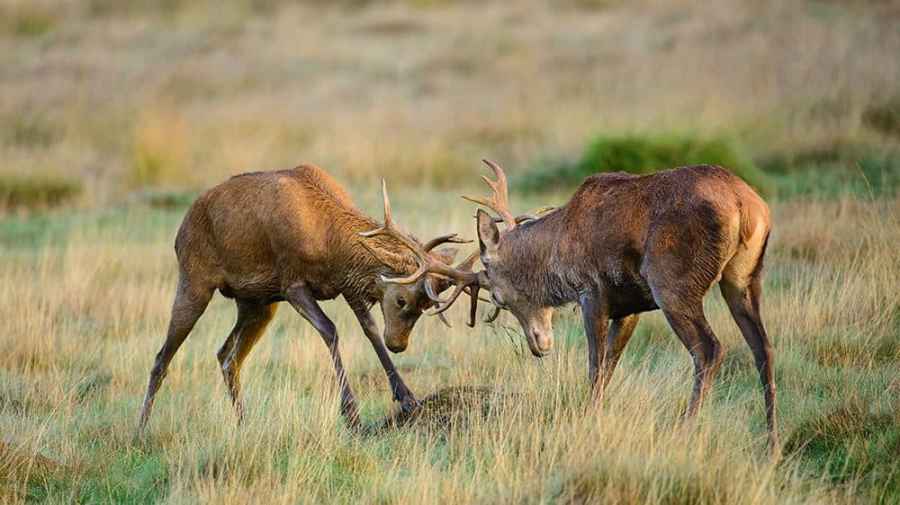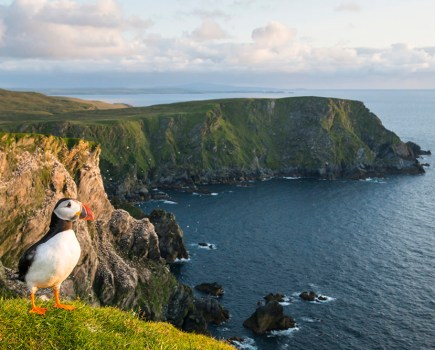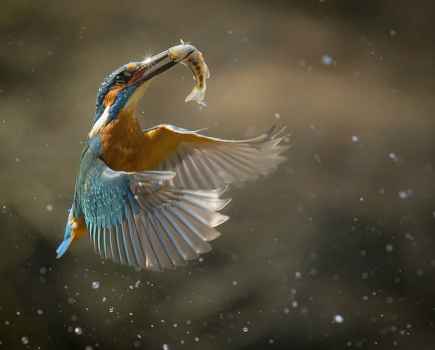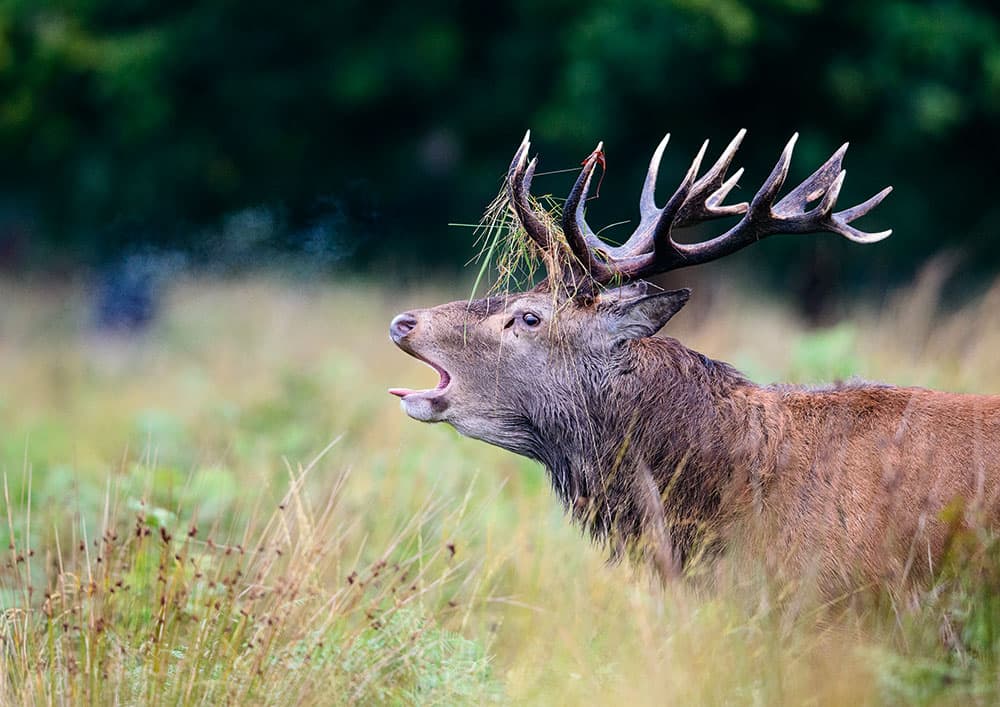
Red deer: Arrive early and listen out for bellowing males. All pictures Oscar Dewhurst
About red deer
Red deer are the UK’s largest land mammal.
- Location Red deer are widely distributed across the UK, but are most easily photographed in the deer parks that are found all over the country.
- Size Shoulder height is 95-130cm; weight can be up to 240kg.
- Breeding Males compete for access to females during the rut, in autumn. Fawns are born during early summer, and will stay with their mothers for nearly a year.
- Diet Red deer feed by grazing on grasses and dwarf shrubs, as well as browsing on tree shoots.
- Population There are around 350,000 red deer in the UK.
October is a great time to photograph red deer as it is rutting season, when males (stags) compete to mate with the females (hinds). Sporting huge sets of antlers, the stags look nothing short of spectacular, and images of them bellowing and fighting can look fantastic, particularly in the right light. This, combined with their tolerance towards people when in deer parks, makes them an ideal subject for this time of year.
It’s also worth noting that locations frequented by deer may also harbour ticks, some of which can carry Lyme disease. It is therefore always a good idea to check yourself over for ticks when you get back home.
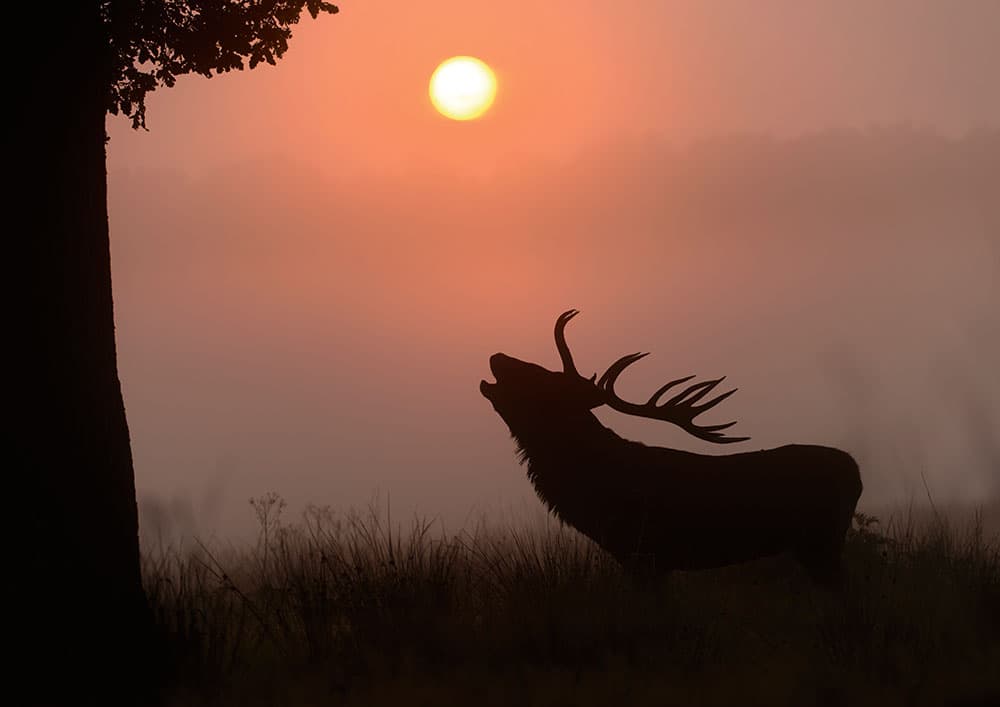
Stag roaring in grassland at sunrise in Richmond Park
Habitat
Red deer are a favourite of photographers in the UK. Fortunately there are plenty of locations where you can photograph them, from the more ‘wild’ populations in Scotland, southwest England, Cumbria and the Peak District, and East Anglia, to those enclosed in the many deer parks dotted throughout the country, such as Bradgate Park in Leicestershire. Have a look online to see if there are any locations near you. Outside deer parks, they are found in forests (especially conifer plantations in Scotland), as well as on open hillsides and moorland. Arrive early and listen for the bellowing of males, which is a giveaway of their presence.
Best time to shoot
Red deer activity is greatest early in the morning, so I always make the effort to get to my location before sunrise. The weather conditions can also make a big difference to the photos: clear skies overnight can mean morning mists, giving you the opportunity to shoot into the rising sun and capture images with a lovely golden colour across them. Sunset can also be a good time to photograph as the sun is, again, lower, but you will not get the mist like you do at sunrise. Autumn is a good time to photograph them but in winter many stags will still have their antlers, giving the possibility of images taken in snow. Photographing red deer during the summer also offers the possibility of images of fawns with their mothers, and males with velvet-coloured antlers.
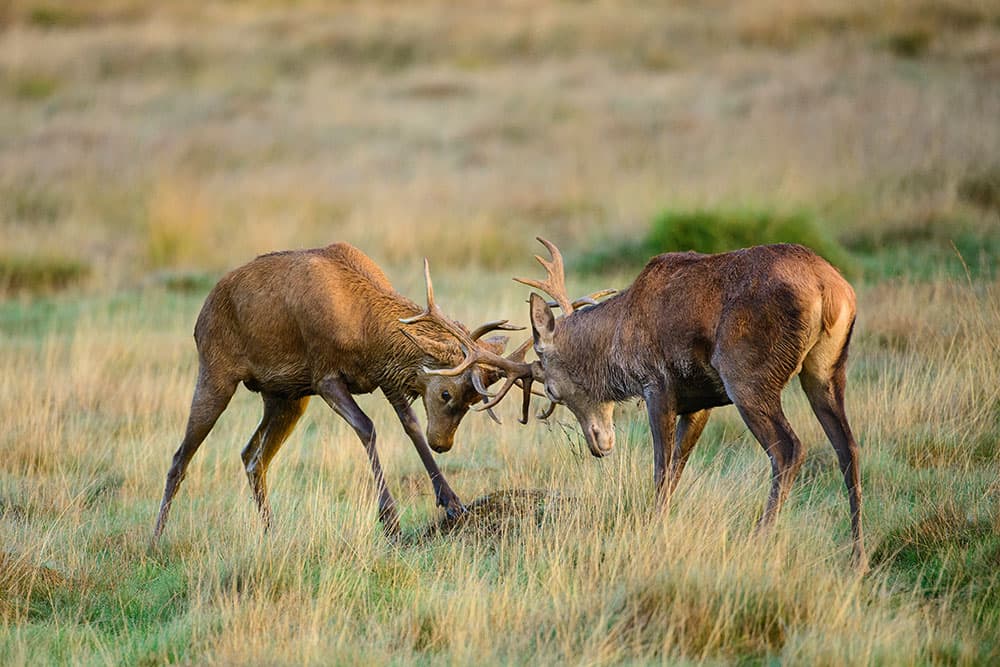
A spectacular red deer rut, also taken in Richmond Park
Approach
Deer that reside in parks are used to people and can often be fairly tolerant of photographers making a close approach. However, you should be aware that stags can be volatile at this time of year, due to the increase in their testosterone levels, and it’s not unusual for them to chase people. Don’t make quick or sudden movements as these may result in unnecessary stress to the animals, not to mention angry glares from other photographers. By taking a bit of care with your approach it is not difficult to get close enough to obtain frame-filling images with even moderate telephoto lenses. If you are photographing in more ‘wild’ areas, you will need to think more about your clothing (both the colour and how much noise it makes when you move) as well as your positioning (always stay downwind, and try not to break the horizon).
Images
There are opportunities for a range of images in autumn as the stags are very active. This can produce great shots, particularly if you can get the condensation from their breath backlit. They will also thrash their antlers in bracken and long grass, which looks ridiculous when you can’t see their head! Occasionally their displays to other males will escalate into spectacular fights. There are plenty of more tranquil opportunities, though, such as group shots of hinds (females) with a stag, and you may see jackdaws perching on the deer and picking ticks off them.
Settings
I use single spot and continuous autofocus, and my fastest frame rate (albeit only 4fps on my D800) and manual exposure, particularly if shooting into the light, to ensure correct exposures.
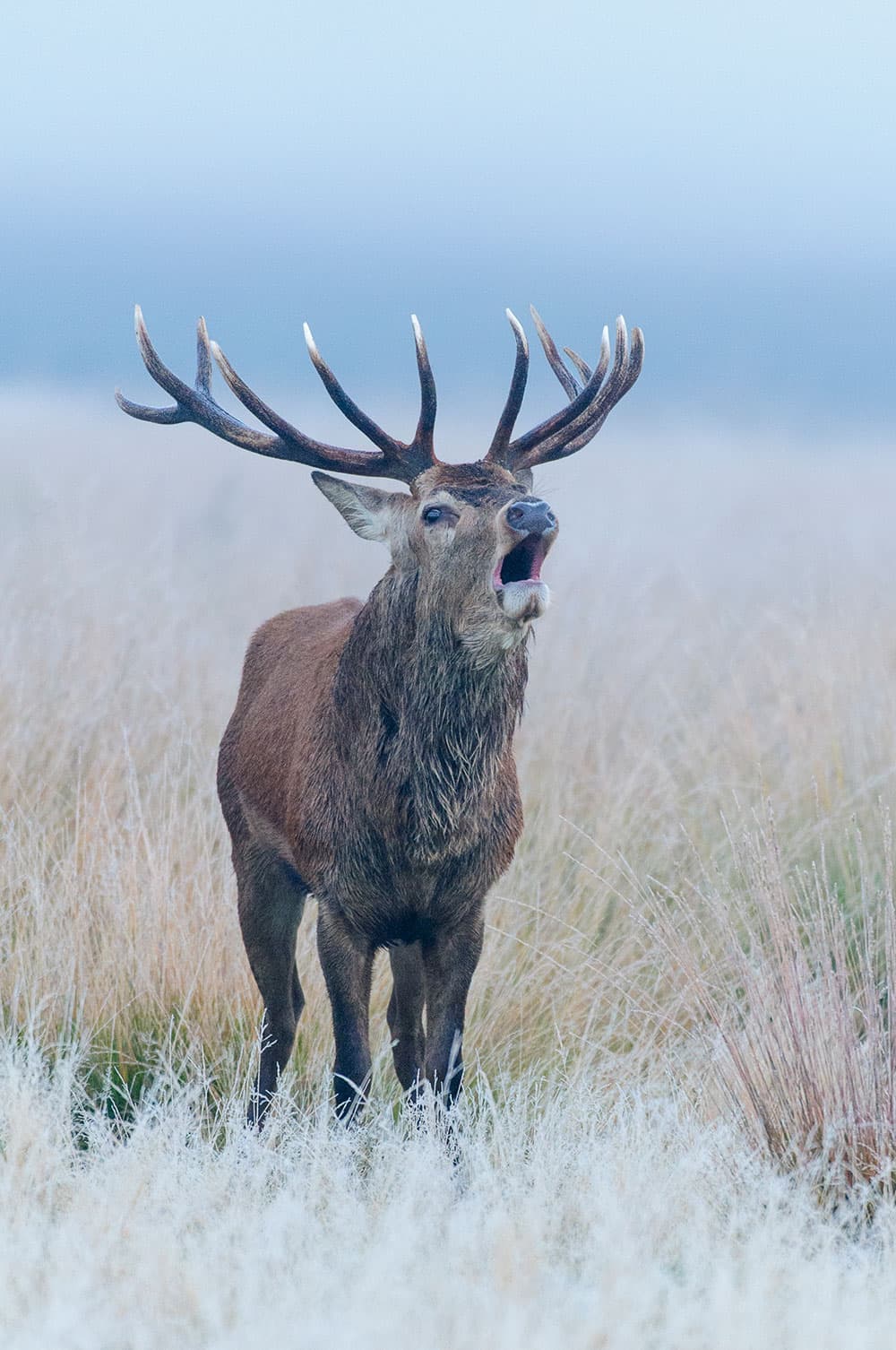
A red deer (Cervus elaphus) stag
Kit list
Binoculars
I carry my Swarovski binoculars wherever I go. They are much lighter and clearer to look through than camera viewfinders, so are invaluable in finding subjects.
Waterproofs
Grass and bracken can be laden with dew in the mornings in autumn, meaning that without waterproofs you will quickly find yourself soaking wet! A pair of waterproof trousers and boots will keep you dry, which means you can stay out shooting for longer.
Oscar Dewhurst

Oscar is an award-winning wildlife photographer. He has spent the past few years dedicating countless hours to photographing many species of wildlife, from bitterns to urban foxes and primates in the Peruvian Amazon. To see more of his work, visit www.oscardewhurst.com.

